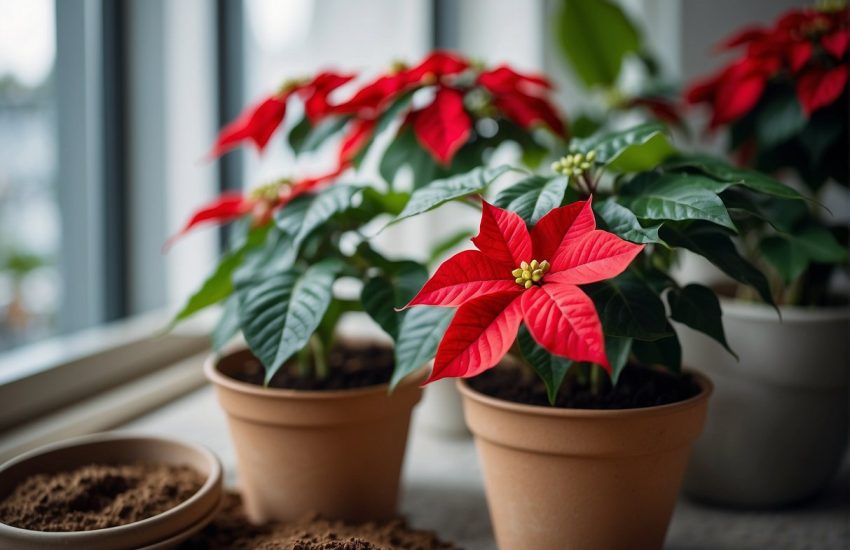String of Beads Plant: A Guide to Growing and Caring for This Unique Succulent
The string of beads plant, also known as Senecio rowleyanus, is a popular houseplant that is native to South Africa. This plant is a member of the Asteraceae family and is known for its unique appearance. The string of beads plant is a trailing succulent that features small, round leaves that resemble beads on a string.
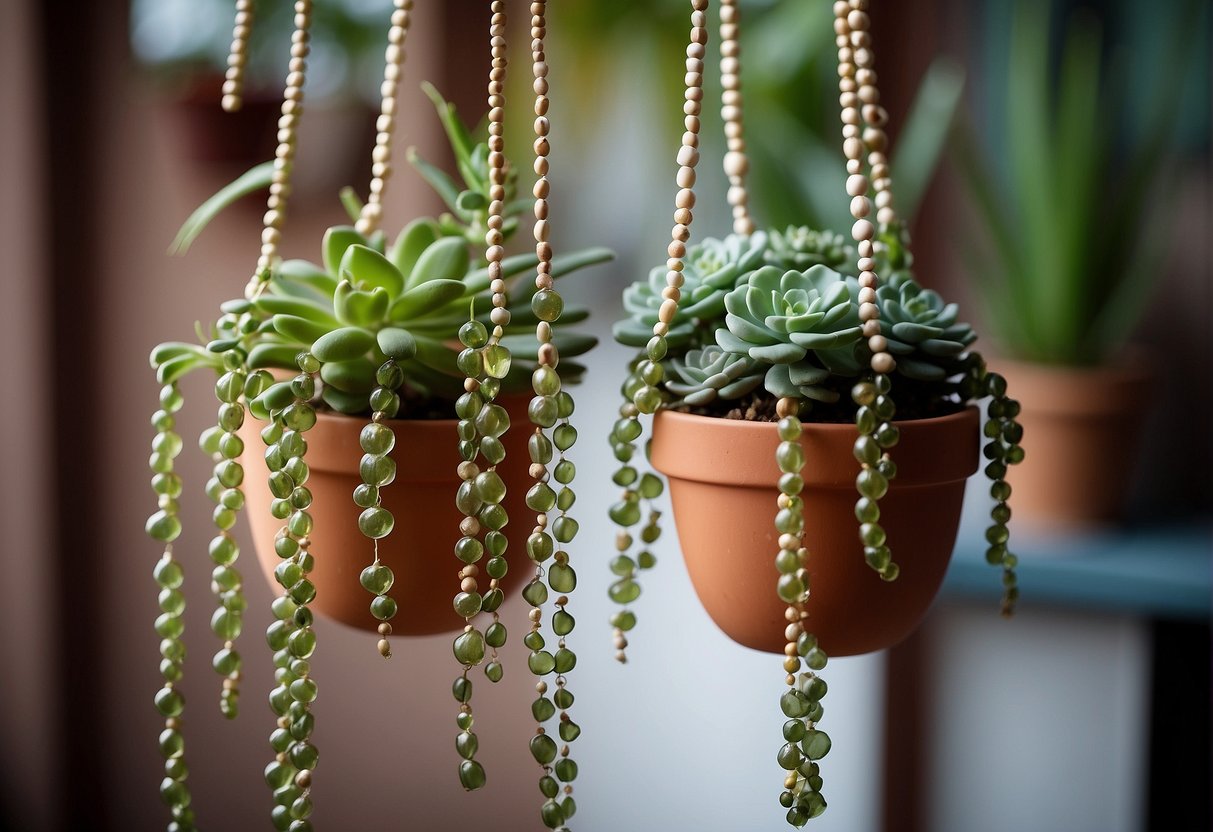
One of the most distinctive features of the string of beads plant is its unusual growth habit. This plant produces long, thin stems that can reach up to three feet in length. The stems are covered in small, spherical leaves that are green in color. The leaves are arranged in pairs along the stem, giving the plant its characteristic appearance. The string of beads plant is an excellent choice for those who are looking for a low-maintenance houseplant that is easy to care for.
Overview and Origin

The String of Beads plant, scientifically known as Senecio rowleyanus, is a popular succulent that is native to southwestern Africa. It is a member of the Asteraceae family and belongs to the Curio Rowleyanus genus.
Species and Genus
Senecio rowleyanus is a species of flowering plant that is characterized by its long, trailing stems and round, bead-like leaves. The plant is also commonly known as String of Pearls due to its resemblance to a strand of pearls. It is a perennial plant that can grow up to 3 feet in length.
The Curio Rowleyanus genus is a relatively new genus that was created in 2017 to accommodate the Senecio rowleyanus plant. The genus is named after Gordon Douglas Rowley, a renowned botanist who specialized in succulent plants.
Geographical Origin
The String of Beads plant is native to the drier regions of southwestern Africa, including Namibia and South Africa. It is commonly found growing in rocky areas and on slopes, where it can spread out and trail along the ground.
The plant has become popular in other parts of the world due to its unique appearance and ease of care. It is often grown as a houseplant and can be found in many homes and offices around the world.
In conclusion, the String of Beads plant is a fascinating succulent that is native to Africa. Its unique appearance and ease of care have made it a popular houseplant around the world.
Planting and Repotting
Soil Requirements
String of beads plant requires well-draining soil to prevent root rot. It is recommended to use a succulent potting soil or a well-draining soil mix. Avoid using heavy soils that retain moisture for too long.
Choosing the Right Pot
When choosing a pot for string of beads plant, consider the plant’s size and growth pattern. A small pot may restrict the plant’s growth, while a large pot may allow the soil to retain too much moisture. It is recommended to use a pot with a drainage hole to prevent waterlogging.
Repotting Process
String of beads plant should be repotted every 2-3 years or when the pot becomes too small for the plant. To repot, gently remove the plant from its current pot and shake off excess soil. Place the plant in a slightly larger pot with fresh potting mix and press the soil firmly around the roots. Water the plant thoroughly and allow the soil to drain before placing it in its original location.
When repotting, it is important to ensure that the new pot has adequate drainage and is not too large for the plant. String of beads plant can also be grown in hanging baskets, which should be lined with sphagnum moss to retain moisture.
Care and Maintenance
Watering Guidelines
The String of Beads plant requires moderate watering during the growing season, which is from spring to fall. Overwatering can lead to root rot, so it is essential to ensure that the soil has dried out before watering again. It is best to water the plant thoroughly and let the excess water drain out of the pot’s bottom. During the winter months, the plant goes dormant, and watering should be reduced to prevent the soil from becoming too moist.
Light and Temperature
The String of Beads plant prefers bright, indirect light, but it can also tolerate some direct sunlight. It is best to place the plant near a window that receives bright, indirect light for most of the day. During the summer months, the plant can be moved outdoors to a partially shaded area. The ideal temperature range for this plant is between 60°F to 85°F, and it should be kept away from cold drafts.
Pruning and Cleaning
Regular pruning is necessary to keep the String of Beads plant looking healthy and bushy. It is best to prune the plant during the growing season, which is from spring to fall. Pinch off the tips of the stems to encourage new growth and remove any yellow or dead leaves. The plant can also be cleaned by wiping the leaves with a damp cloth to remove any dust or debris.
Overall, the String of Beads plant is relatively easy to care for and maintain. By following these simple guidelines, anyone can keep their plant healthy and thriving.
Propagation Techniques
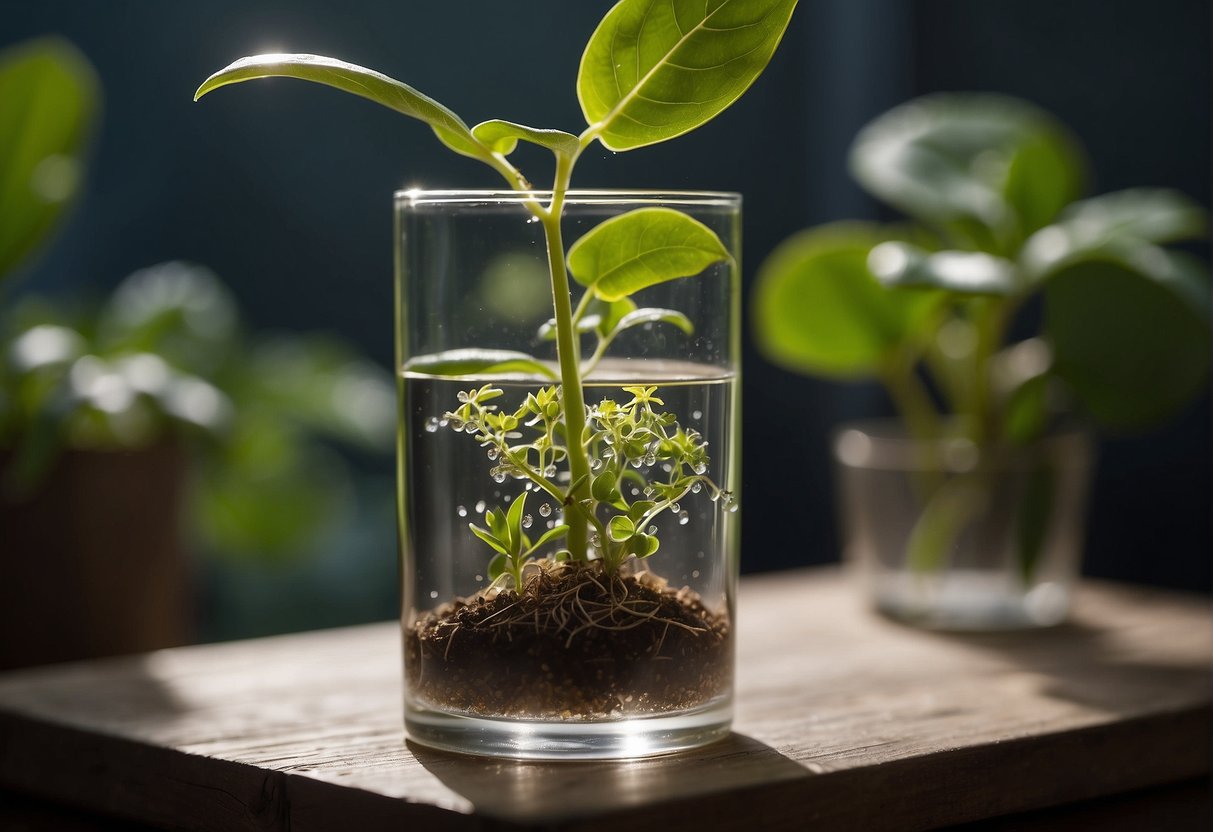
Using Stem Cuttings
One of the simplest and most effective ways to propagate a string of beads plant is by using stem cuttings. To do this, select a healthy stem that is at least 4 inches long and has several leaves. Using a clean, sharp pair of scissors, cut the stem just below a node, which is where a leaf attaches to the stem. Remove any leaves from the bottom two inches of the stem, leaving at least two leaves at the top.
Next, dip the cut end of the stem in rooting hormone powder and gently tap off any excess. Plant the stem in a pot filled with a well-draining potting mix, making sure the bottom two inches are buried in the soil. Water the cutting thoroughly and place it in a bright, indirect light. Keep the soil moist but not waterlogged, and within a few weeks, the cutting should start to develop roots and new growth.
Rooting and Potting
Another way to propagate a string of beads plant is by rooting a stem cutting in water before potting it. To do this, follow the same steps as above, but instead of planting the stem in soil, place it in a jar or vase filled with water. Change the water every few days to prevent bacteria buildup and keep the cutting healthy.
Once the cutting has developed roots, carefully remove it from the water and plant it in a pot filled with a well-draining potting mix. Water the plant thoroughly and place it in a bright, indirect light. Within a few weeks, the cutting should start to grow new leaves and stems.
Overall, propagating a string of beads plant is a simple and rewarding process that can be done using stem cuttings or rooting in water. With the right conditions and care, these cuttings can quickly grow into healthy, vibrant plants that will bring beauty and joy to any space.
Troubleshooting Common Issues
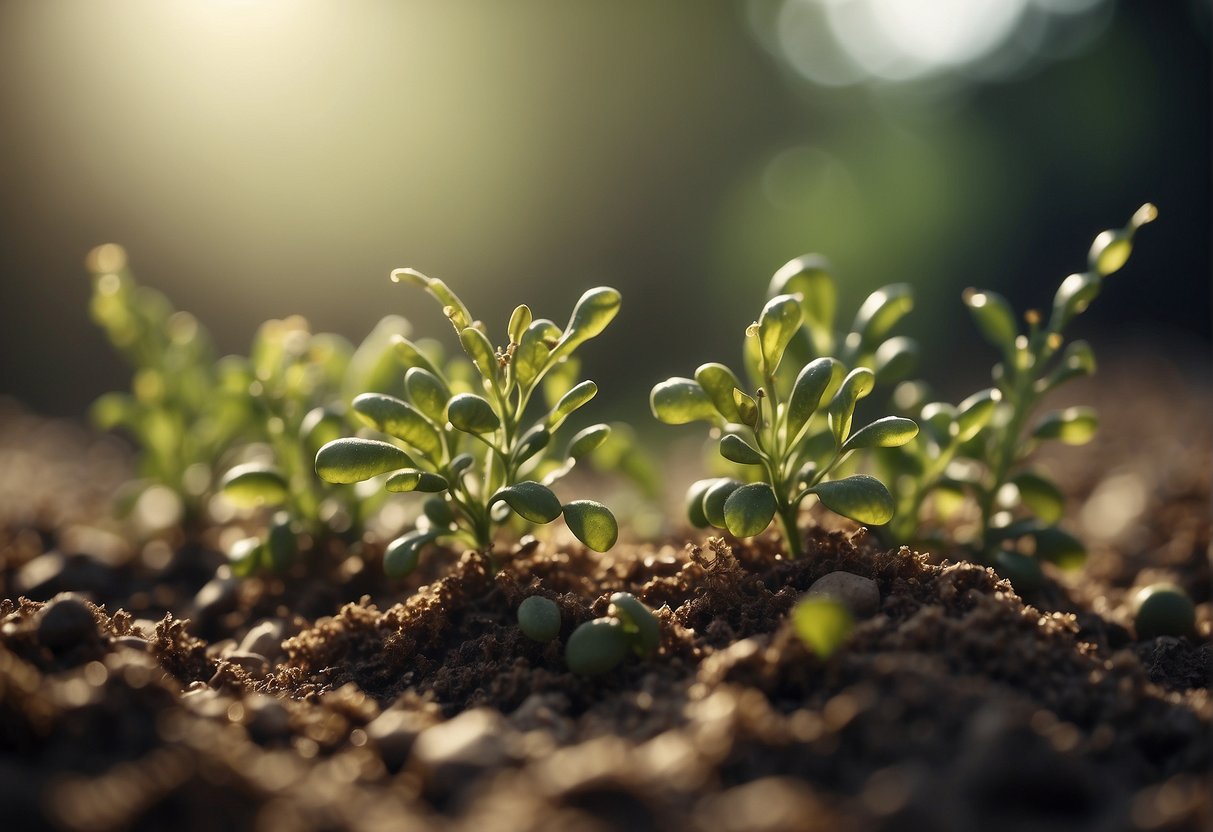
Pests and Diseases
The String of Beads plant is a hardy and low-maintenance plant, but it is still susceptible to pests and diseases. The most common pests that affect this plant are aphids and mealybugs. These pests can be easily identified by the sticky residue they leave behind on the plant. To get rid of them, use a solution of water and dish soap to spray the plant. Alternatively, you can use insecticidal soap or neem oil to get rid of the pests.
Diseases can also affect the String of Beads plant. Root rot is one of the most common diseases that affect this plant. This disease is caused by overwatering and can be easily identified by the yellowing and wilting of the leaves. To prevent root rot, avoid overwatering the plant and make sure the soil is well-draining. If you suspect that your plant has root rot, remove it from the soil and cut off any affected roots before repotting it in fresh, well-draining soil.
Watering Problems
Overwatering is one of the most common problems that affect the String of Beads plant. This can cause the plant to develop root rot, which can be fatal if left untreated. To prevent overwatering, make sure the soil is well-draining and allow the top inch of soil to dry out before watering the plant again.
Underwatering can also be a problem for the String of Beads plant. This can cause the leaves to wilt and turn yellow. To prevent underwatering, make sure the plant is getting enough water and that the soil is not too dry. Water the plant when the top inch of soil is dry to the touch.
It is important to note that the String of Beads plant is toxic to humans and pets. If ingested, it can cause vomiting and diarrhea. Keep the plant out of reach of children and pets to prevent accidental ingestion.
Frequently Asked Questions
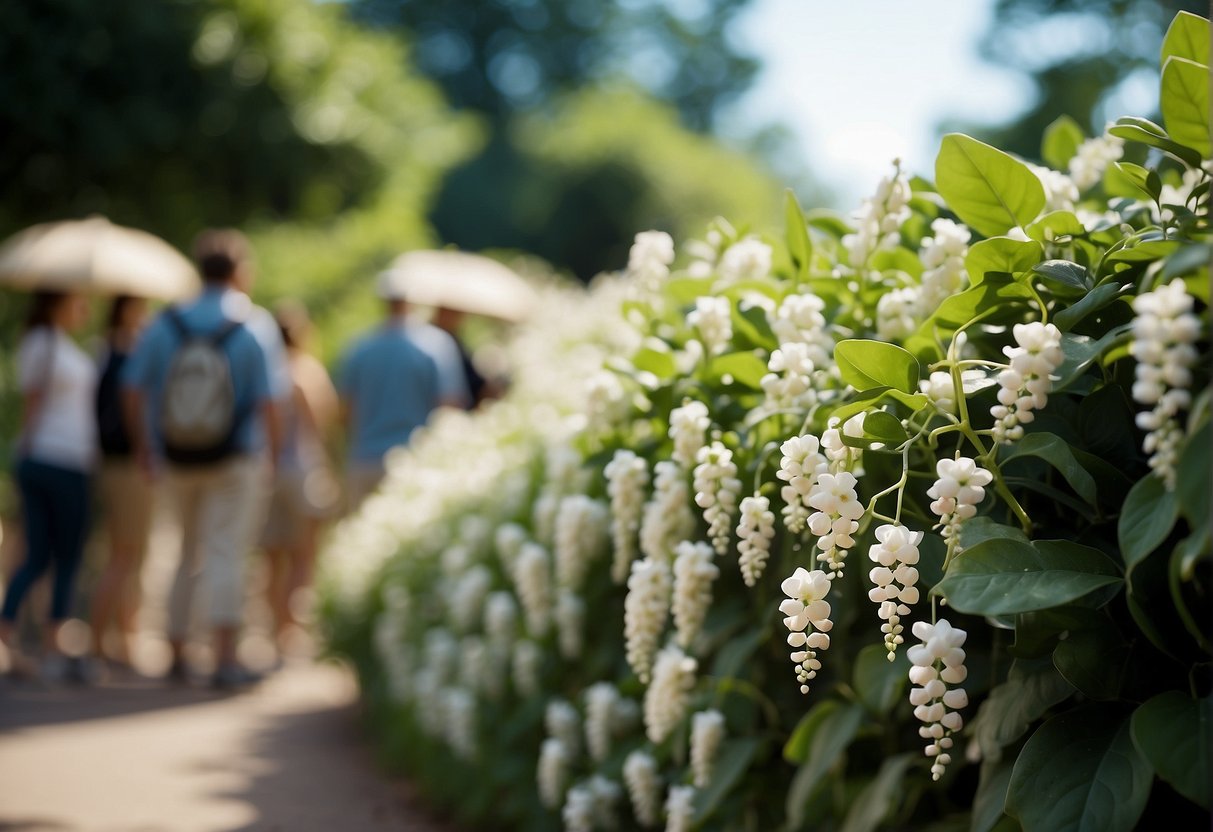
How can I propagate a String of Beads plant?
Propagating a String of Beads plant is relatively easy. The plant can be propagated by stem cuttings, which can be rooted in water or soil. To propagate using stem cuttings, simply cut a stem from the plant, remove the leaves from the bottom few inches of the stem, and place the stem in water or soil. Keep the soil moist and avoid overwatering. The plant should root in a few weeks.
What are the ideal indoor conditions for a String of Beads plant?
The String of Beads plant prefers bright, indirect light and well-draining soil. It can tolerate some direct sunlight, but too much can damage the leaves. The plant also prefers warm temperatures and high humidity.
How do I properly care for a String of Beads plant indoors?
To care for a String of Beads plant indoors, make sure it receives enough light and water. Water the plant when the soil is dry to the touch, but avoid overwatering. Fertilize the plant once a month during the growing season with a balanced fertilizer. Prune the plant as needed to keep it from becoming too leggy.
What are some common issues encountered when growing a String of Pearls plant?
The String of Beads plant is relatively easy to care for, but it can be susceptible to root rot if overwatered. The plant can also become leggy if it doesn’t receive enough light. Pests such as mealybugs and spider mites can also be a problem.
Where is the best place to purchase a String of Pearls plant?
The String of Beads plant can be found at most nurseries and garden centers. It can also be purchased online from various retailers.
Does the String of Beads plant produce flowers, and how can I encourage blooming?
The String of Beads plant can produce small, white flowers in the summer. To encourage blooming, make sure the plant receives enough light and water. Fertilizing the plant with a phosphorus-rich fertilizer can also help encourage blooming.

